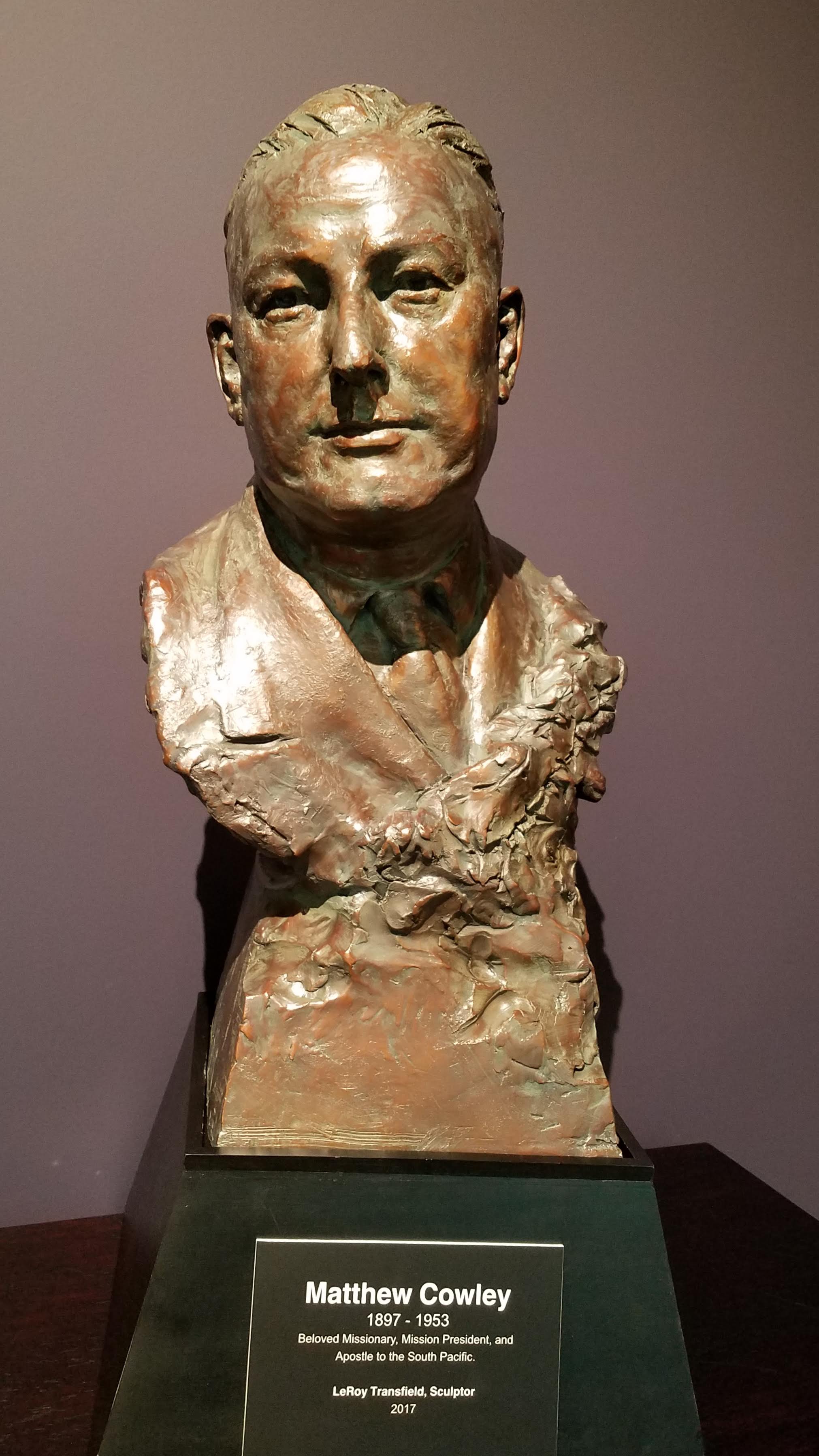
Matthew Cowley by Leroy Transfield (whose mother is one of our docents)
The first thing visitors to the Matthew Cowley Pacific Church History Centre see when they enter the museum is a bronze bust of the Centre’s namesake. So we often ask, “Do you know who Matthew Cowley was? Do you know why the Centre is named for him?”
Some older visitors smile and nod and say, “Of course we know who Tumuaki (President) Cowley was!” Others say, “Wasn’t he an apostle or something?” Young people usually stare back at us blankly, shaking their heads. They have no idea who Matthew Cowley was, so we tell them: “Matthew Cowley was a missionary for the Church of Jesus Christ of Latter-day Saints who lived during the first half of the twentieth century. He was not the first missionary to serve in New Zealand, but he was one of the first called specifically to teach the Maori instead of the European population in the twentieth century. During the twelve years he worked in New Zealand as a young missionary and, later, as a mission president, he developed a deep love for the Maori people, and they for him. Not long after he returned to Utah from his second mission, Elder Cowley was called as an apostle—a position that gave him many opportunities to come back to the South Pacific and serve among the people he loved so much.”
Here’s a little more of Elder Cowley’s history:
Matthew Cowley was born 2 August 1897 in Preston, Idaho, but a few months after Matthew’s birth, his father was called as an apostle of the Church of Jesus Christ of Latter-day Saints, so the family moved to Salt Lake City.
In 1914, during his sophomore year at Latter-day Saints University (the precursor to LDS Business College), Matthew let his church leaders know that he wanted to go on a mission, even though he was only 16 years old. A few weeks later, he received a letter from President Joseph F. Smith (nephew of founder Joseph Smith, and head of the Church at the time), calling him to serve a mission in Hawaii, where two of Matthew’s older brothers had served. When the Cowleys’ neighbor, Anton H. Lund, got home from work that evening, Matthew shared the exciting news with him. Matthew reported that Brother Lund, who also happened to be first counselor to President Smith, somewhat jokingly had said to him, “You know, you have caused a lot of trouble in the neighborhood. You’ve broken my fence, my hedge, ruined my flowers, and caused all kinds of trouble. Hawaii is not far enough away. You need to get as far away from us as possible.”*
Then President Lund got serious and said, “I don’t think you have been called to the right place.” He took the letter from a very disappointed Matthew, telling him that he needed to discuss the matter with President Smith. A few days later, a new letter arrived, calling Matthew to go to New Zealand—about as far away from Salt Lake City as one can get.
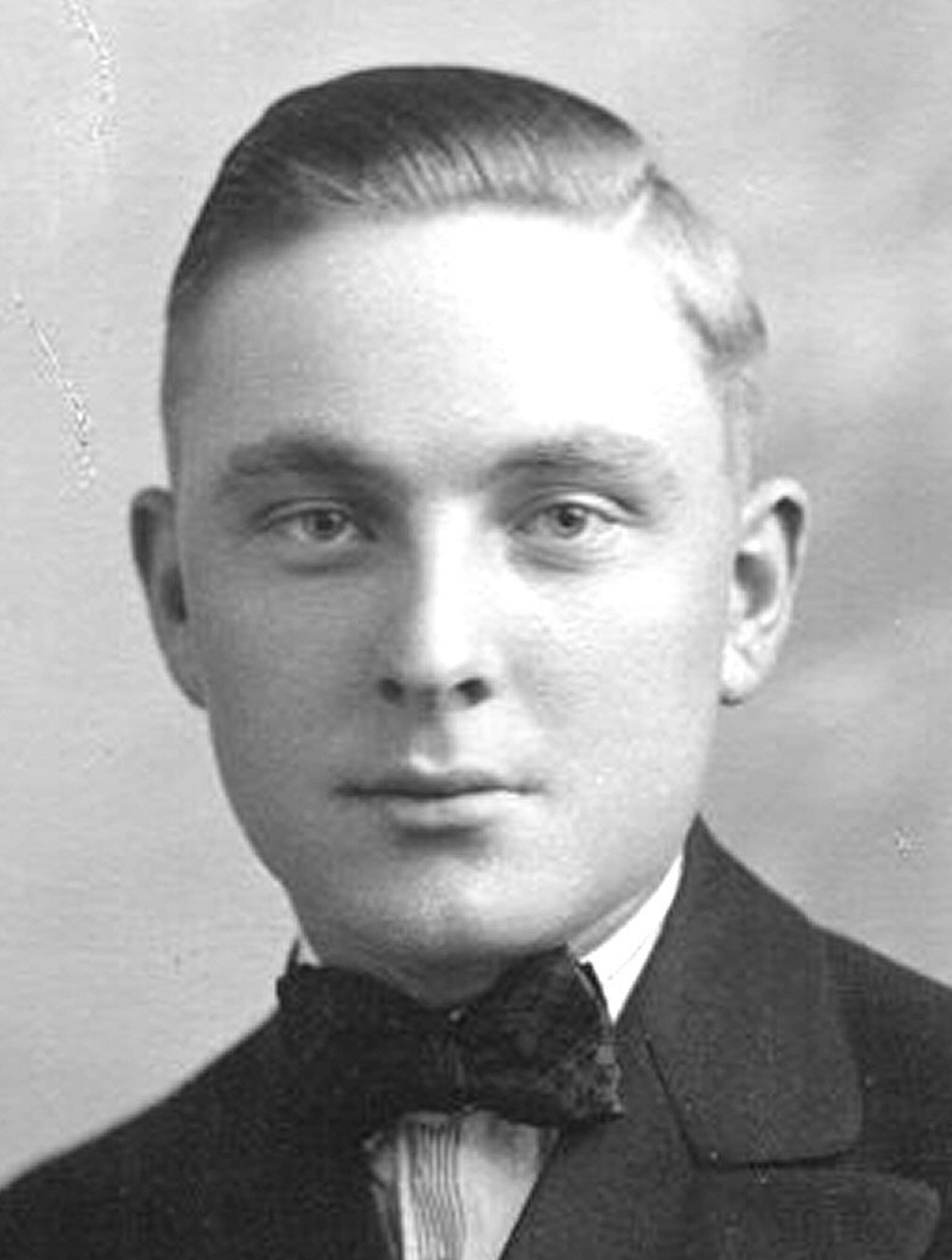
Matthew at age 17, when he received a mission call to New Zealand
On 22 November 1914, Matthew arrived in Auckland Harbor with a party of missionaries and the new president of the Maori Agricultural College, a Church-sponsored secondary vocational school that had recently opened in Hastings. Matthew’s mission president, William Gardner, assigned the 17-year-old to work—without a companion—in an all-LDS village called Judea, four miles south of Tauranga on the Bay of Plenty.
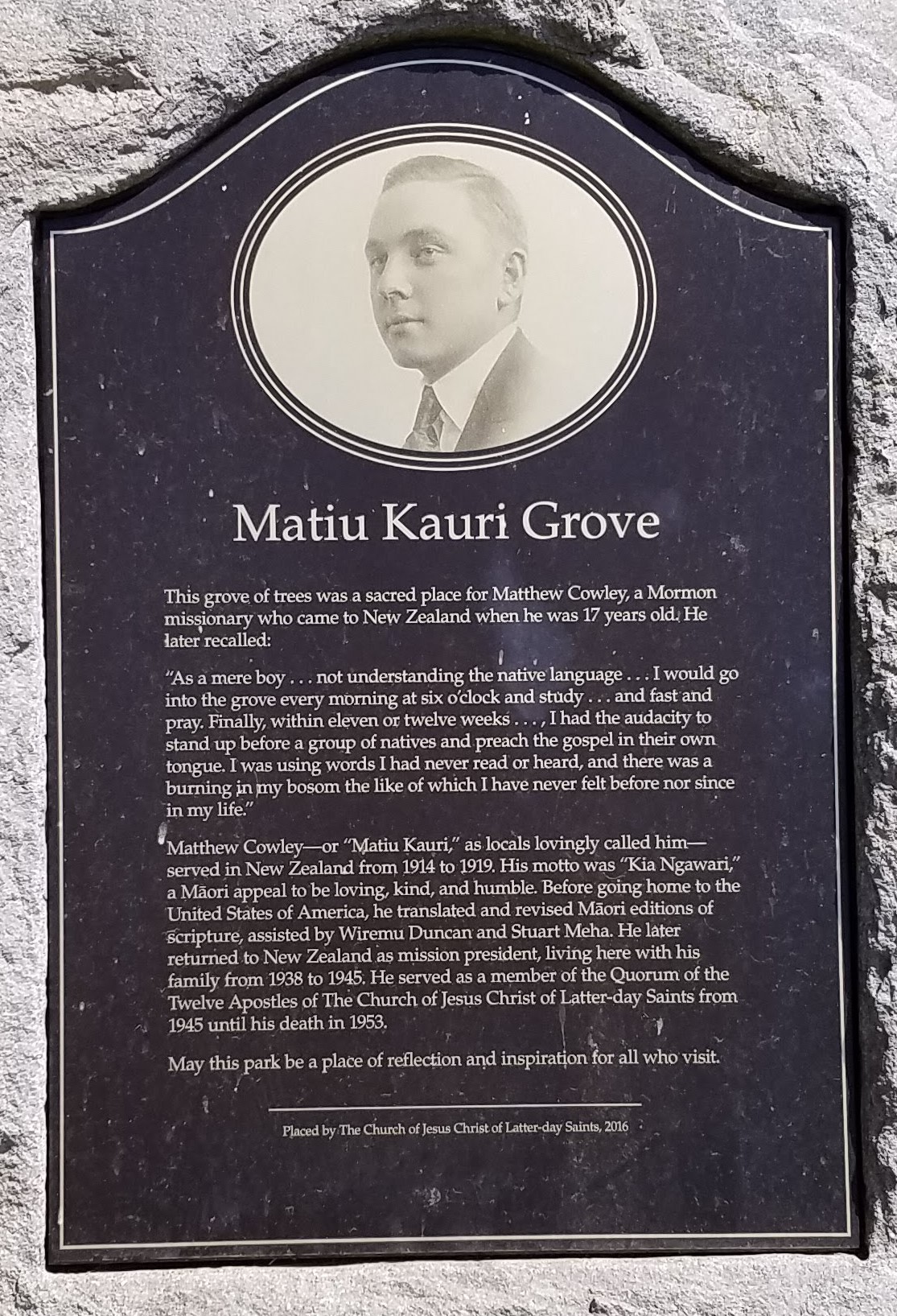
Plaque in the grove where he studied Maori
In Judea, Matthew boarded with a Latter-day Saint family named Hall. After a few weeks he got sunstroke and could not work; nevertheless, he was determined to learn Maori so that he could fulfill his assignment to preach to the people in their native tongue. At the time, there were no schools or academies where the Maori language was taught, so Matthew secured Maori translations of the Bible and the Book of Mormon and read them aloud to Sister Hall and her daughter. They listened patiently, correcting his pronunciation and teaching him basic Maori grammar. Matthew fasted, prayed, and spent a lot of time studying—generally eleven hours a day—in a grove of trees overlooking the wide, sparkling bay.

Later in his mission
Within three months, Matthew felt confident enough to begin preaching. “I had the audacity to stand up before a group of natives and preach the gospel in their own tongue,” he said. “I was using words I had never read or heard, and there was a burning in my bosom the like of which I have never felt before nor since in my life…. The power of God was speaking through me as a youngster, seventeen years of age.”* Matthew went on to become an eloquent speaker in both Maori and English, rarely using notes or preparing ahead, depending entirely on inspiration from the Holy Spirit.

With the Sunday School
Like most other missionaries called in the early twentieth century, Matthew expected to serve for three years. However, by 1917, the government of New Zealand had greatly decreased the number of American missionaries it would allow into the country; consequently, James N. Lambert, then president of the New Zealand Mission, requested and received approval for Matthew to extend his mission, and he was given the specific assignment to translate into Maori the remaining books of the Latter-day Saint canon: the Doctrine and Covenants and the Pearl of Great Price. Matthew also was instructed to make corrections to the Maori version of the Book of Mormon, which had been created years earlier by other American missionaries who had not developed the same level of fluency in Maori as Matthew had. To facilitate this work, the Takana (Duncan) family—with whom Matthew had been living—added two new rooms to their house: one for him to sleep in and one for him to work in. Two Maori elders, Wiremu Duncan and Stuart Meha, assisted Matthew with the translation.
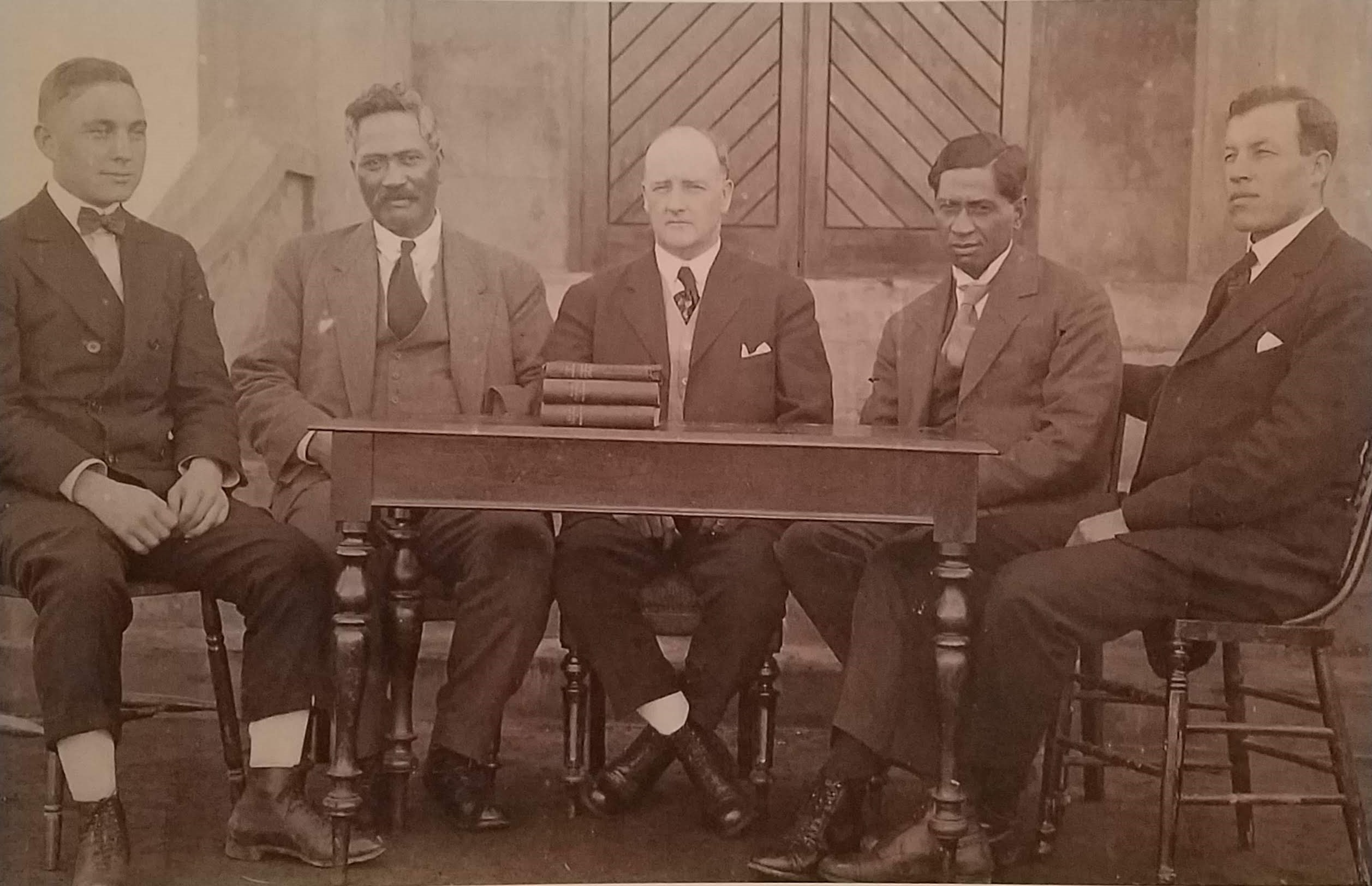
The Standard Works translation team: Matthew, Wiremu Takana (Duncan), President James N. Lambert, Tuati (Stuart) Meha, and J. Delos Lauritzen, c. 1919
In a letter to his sister, Matthew described what he had felt as he translated these books: “I can say in all sincerity that I experienced, during this work, the feeling of a helping power outside and beyond my own. … This was the great experience of my life and it will always remind me that God can and will accomplish his purposes through the human mind.”*
In May 1919, after four and a half years of missionary service, Matthew was released. His mission president described the great impact he had had: “I was down in Hawkes Bay last week—where Elder Cowley spent much of his time while working on the translation of the Doctrine and Covenants and Pearl of Great Price—when a farewell entertainment was given him and could you have seen the many expressions of love and appreciation that were bestowed upon him, I know you would have rejoiced and thanked the Lord. Never before have I seen such love to an elder.”*
After his return to Utah, Matthew wanted to attend the University of Utah, but encountered resistance from its president because he had never graduated from high school. However, the president agreed to consider his application if Matthew could obtain interviews with prominent faculty, and if all who interviewed him gave him a positive recommendation. Matthew was given a list of 39 faculty members and met with every one. Not only did all of them recommend that he be admitted to the University, but also that he should be granted two years of course credit. Two years later, after graduation, Matthew matriculated at George Washington University Law School. In 1922, he married Elva Eleanor Taylor, whom he had met while attending the University of Utah, in the Salt Lake Temple. The couple lived in Washington, D.C., while Matthew finished law school and began his career. Four years later they returned to Salt Lake City, where Matthew started his own law practice and also served a term as county attorney. A daughter, Jewell, was born to the Cowleys in 1926.
Matthew’s term in the county attorney’s office coincided with the height of the Prohibition era, and bootlegging was a problem even in Mormon-dominated Salt Lake. Matthew gained a reputation as a tough but fair prosecutor who could not be bribed.
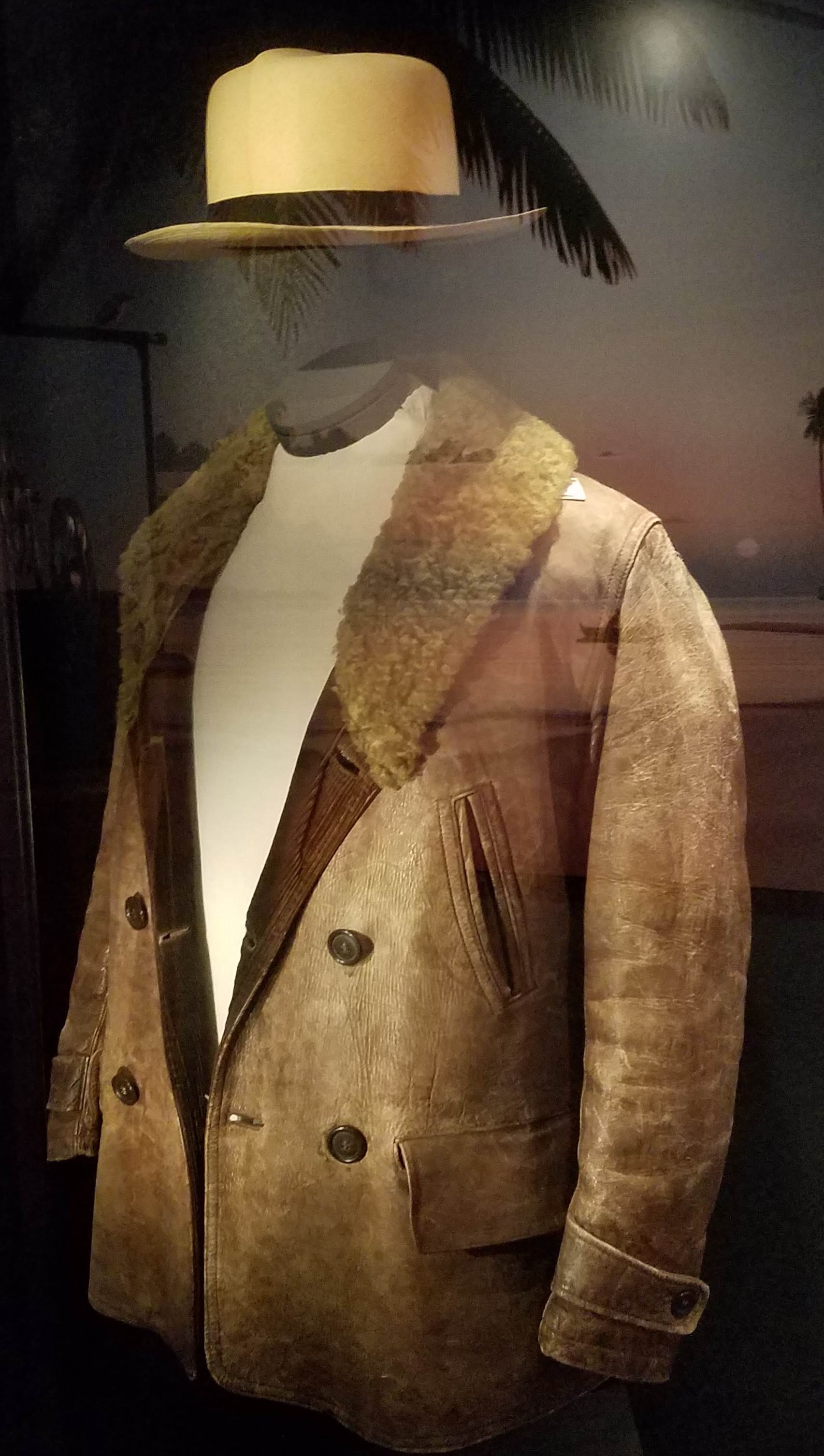
Signature jacket and hat
In 1938, Matthew was called to return to the South Pacific as president of the New Zealand Mission, with responsibility for 60 missionaries and 9000 members. When war broke out in Europe and Asia, all LDS missionaries were sent back to their countries of origin, and most able-bodied young Kiwi men were sent to fight with British forces, so President Cowley was the sole Pakeha left to tend the Maori flock.
During his mission presidency, Matthew learned to trust the Lord completely. He loved traveling, and loved allowing the Spirit to lead him. On one occasion when he had called his assistant to accompany him on a trip, he asked his young companion if he wanted to know where they were going. When the young missionary answered yes, President Cowley responded, “I would like to know, too!” They ended up at the post office in a small village, where they saw two women waiting outside. When they saw President Cowley get out of the car, one woman turned to the other and said, “See? I told you he would be here soon.”*

Matthew averaged reading a book a day
Matthew was a voracious reader and had a prodigious memory, but he sometimes missed appointments or scheduled meetings when he was prompted to focus on individuals who needed attention. Once, the night before a branch conference, he visited a well-known Church member who had strayed from the fold.
“I want you to be at church tomorrow,” he said to the man, who was sitting on his front porch smoking a cigar.
“Why tomorrow?” the man asked.
“Because I am going to call a new branch president [to lead the congregation],” replied Matthew.
“Just tell me his name now, so I won’t have to get dressed up and go,” said the man.
“Well, you will still need to be there even if I tell you, because it is you.”
The man thought for a moment, threw his cigar on the ground, and then looked Matthew in the eye. “I will be there and I will be the best branch president you have ever known,” he said. And, as Matthew reported later, he was.*
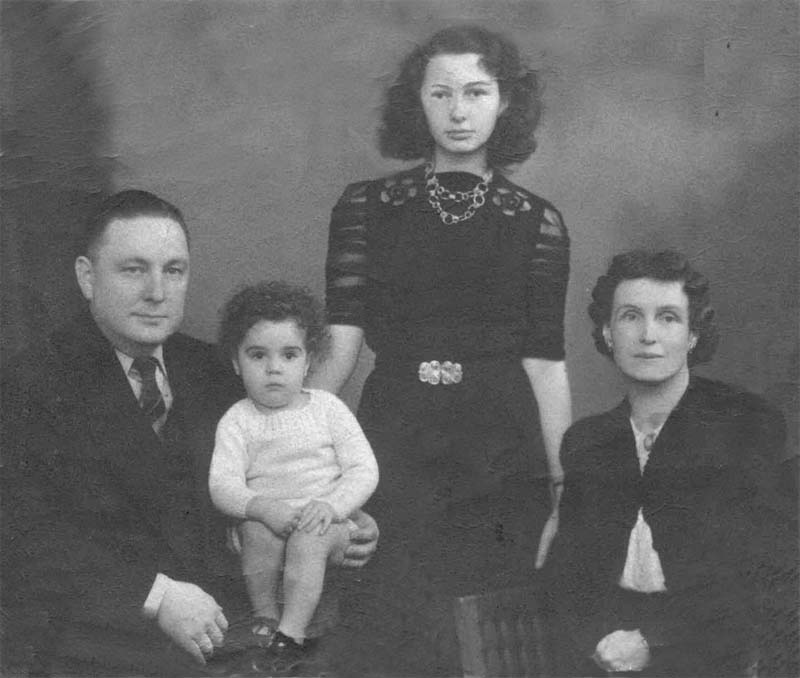
Matthew, Toni, Jewell, and Elva Cowley
Matthew was released as president of the New Zealand Mission in September 1945, and the Cowleys returned to Salt Lake City. The family now included a son, Toni, a half-Maori whom Matthew and Elva had adopted as a baby in 1941. They arrived in Utah dirt poor, having never owned a house nor made any investments, and with no clients remaining from the law practice Matthew had left seven years earlier.
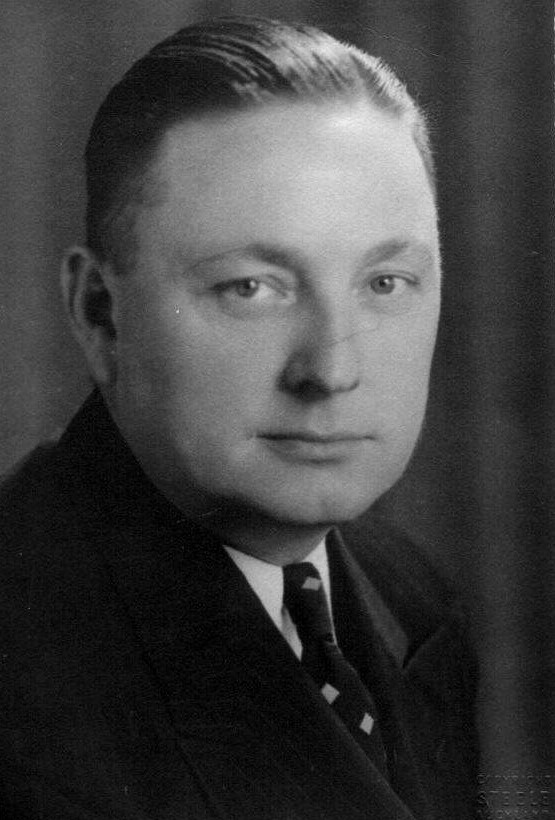
Matthew as a new apostle
As the Church’s October General Conference approached just after the Cowleys’ return, President George Albert Smith invited Matthew to attend the opening session and to sit on the front row. Matthew thought he was going to be asked to give one of the prayers or to bear his testimony, as was common for newly returned mission presidents. The opening session was to be a solemn assembly, where new leaders would be announced and sustained by the members of the Church. The death of President Heber J. Grant in May 1945 had left a vacancy in the Quorum of the Twelve Apostles, so Matthew expected that a new apostle would be named at the session. What he didn’t expect was to hear his own name announced as the one to fill the opening! When the session was over, he hurried home to relay the news to his equally stunned wife, then returned to the afternoon session to give his first talk as an apostle—another opportunity for Matthew to demonstrate that he didn’t need to prepare a speech because the Spirit would fill his mouth with the words he needed.
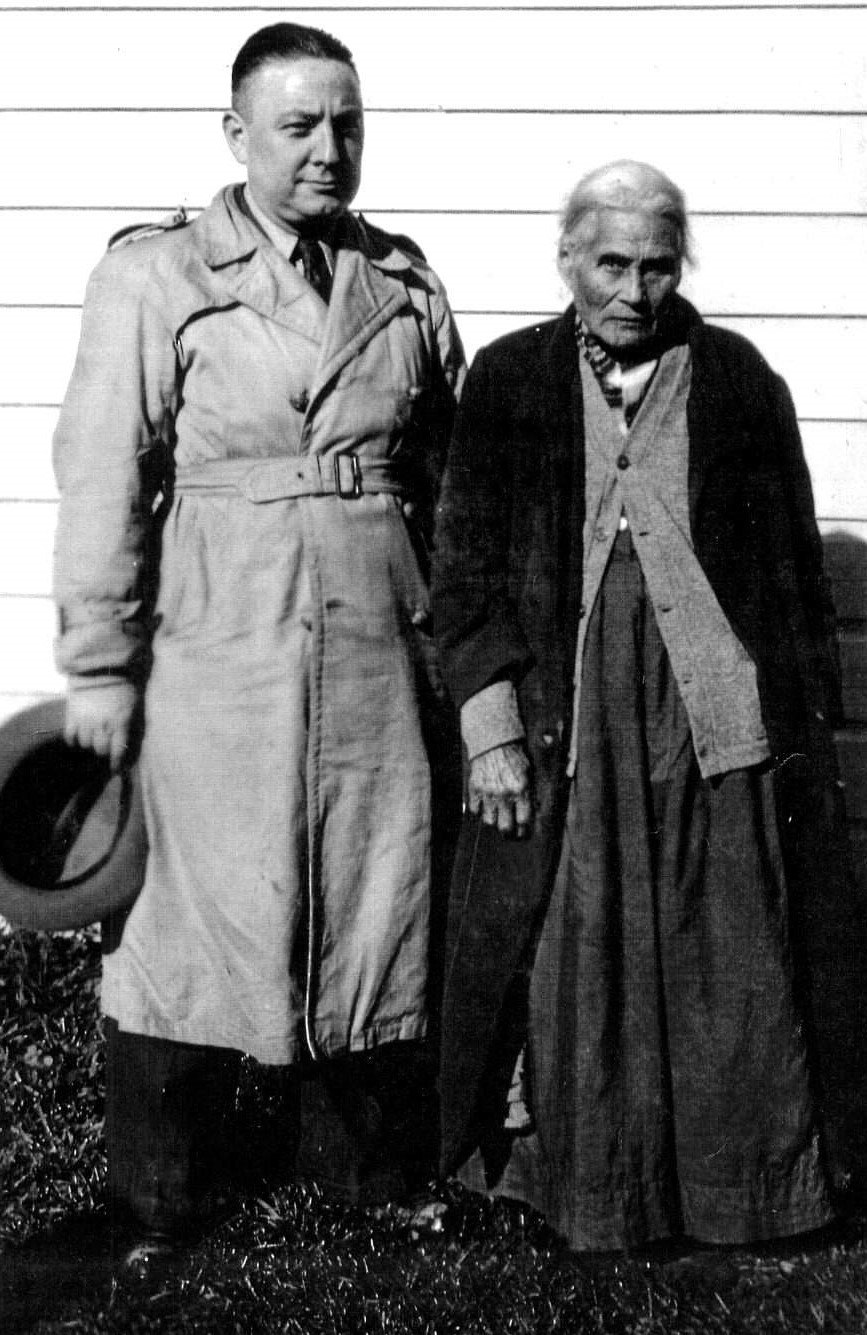
Matthew returned to see his beloved Maori saints as often as he could
Matthew was beloved of President Smith, who gave him most of the assignments he was too busy to fulfill himself. In May 1946, Matthew suffered a heart attack and never regained the robust health he had enjoyed previously, but he did not allow that setback to affect his ministry as an apostle. In December of that year, Elder Cowley was called to preside over all the missions in the Pacific: Hawaii, Tahiti, Samoa, Tonga, Australia, and New Zealand—an assignment that he fulfilled with relish.
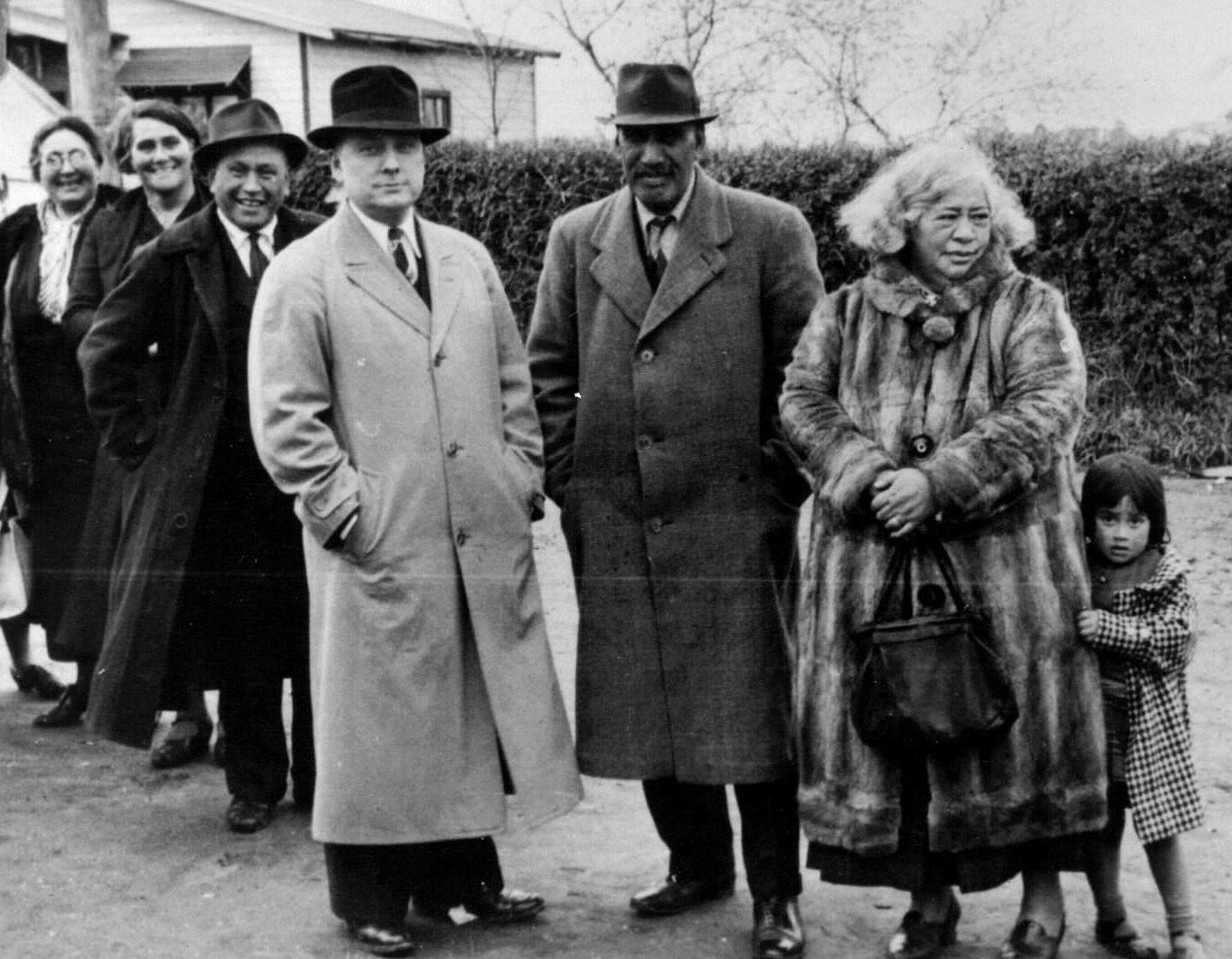
Visiting Torongata
At the Matthew Cowley Pacific Church History Centre, we often show a film clip of Elder Cowley relating an unforgettable personal experience. While visiting New Zealand as an apostle, a man named Te Rauparaha Wineera asked him to give his son a name and a blessing. Matthew was a little surprised because the child was obviously two or three years old, and usually this practice is reserved for infants, but he agreed to do it anyway. As he was taking the boy in his arms for the blessing, the father said to him, “By the way, when you give him a name, will you also give him his vision? He was born blind.”
“Just like that, just as a matter of fact,” said Elder Cowley. “You have the authority to give this child a name and a blessing; you have the authority to bless it with its vision. I was overwhelmed. I was doubtful in my mind, but I knew that within the being of that Polynesian, there was the simple faith of a child, the simple faith in God and the promises he had made through his Son, Jesus Christ. I gave that child a name; eventually I mustered up enough courage to bless it with its vision.”
When Elder Cowley returned to the area a few years later, he visited the Wineera family, and testified that Te Rauparaha Jr. “was running around, and could see as well as I could.”*
Brother Wineera passed away a few years ago, but we have met his 90-year-old sister, and she, too, testifies that Matthew Cowley was a miracle worker. Many others can tell stories of the healings he performed and the people he blessed.
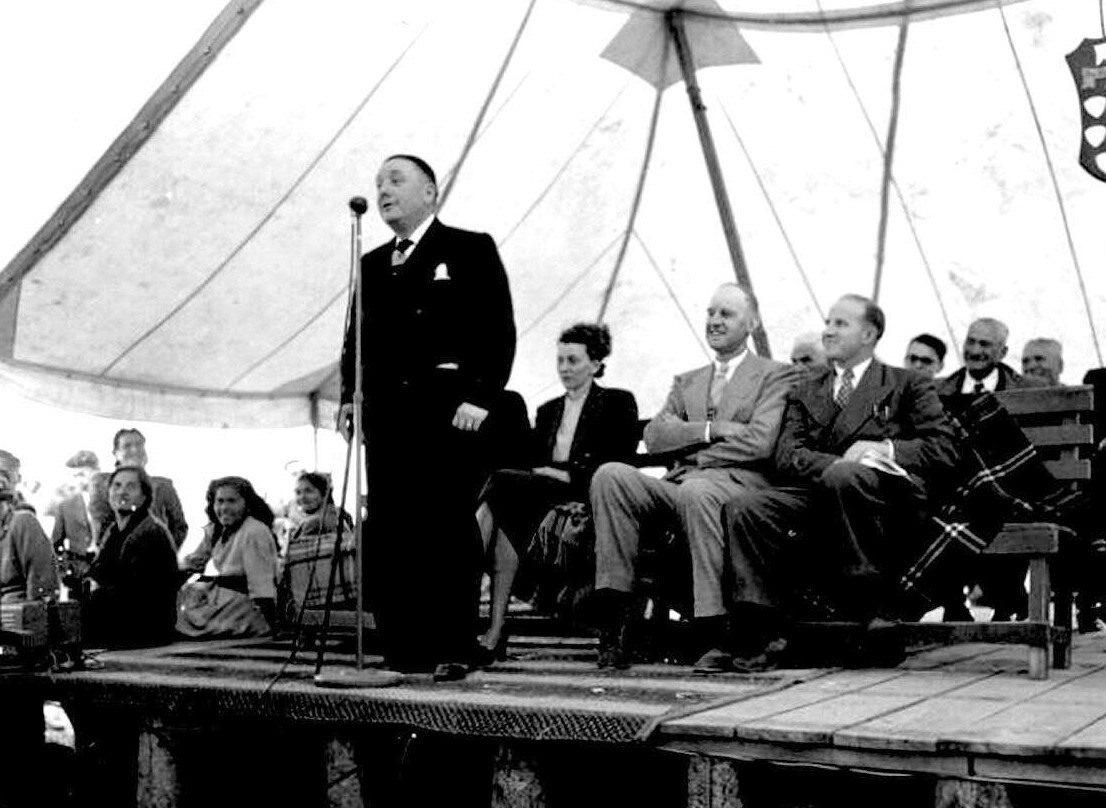
Speaking at a Hui Tau (national Church conference) in 1947
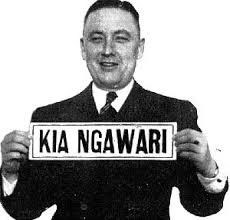
Be kind, gentle, compassionate . . .
The man who became known as the “Apostle of the Pacific” embodied the concept of kia ngawari, treating others with kindness, compassion, gentleness, patience, humility, and love, and encouraging them to develop the same Christlike qualities. Just as he embraced the people of the islands, they embraced him, and by sharing their testimonies of the restored gospel with each other, they strengthened their faith in God and Jesus Christ.
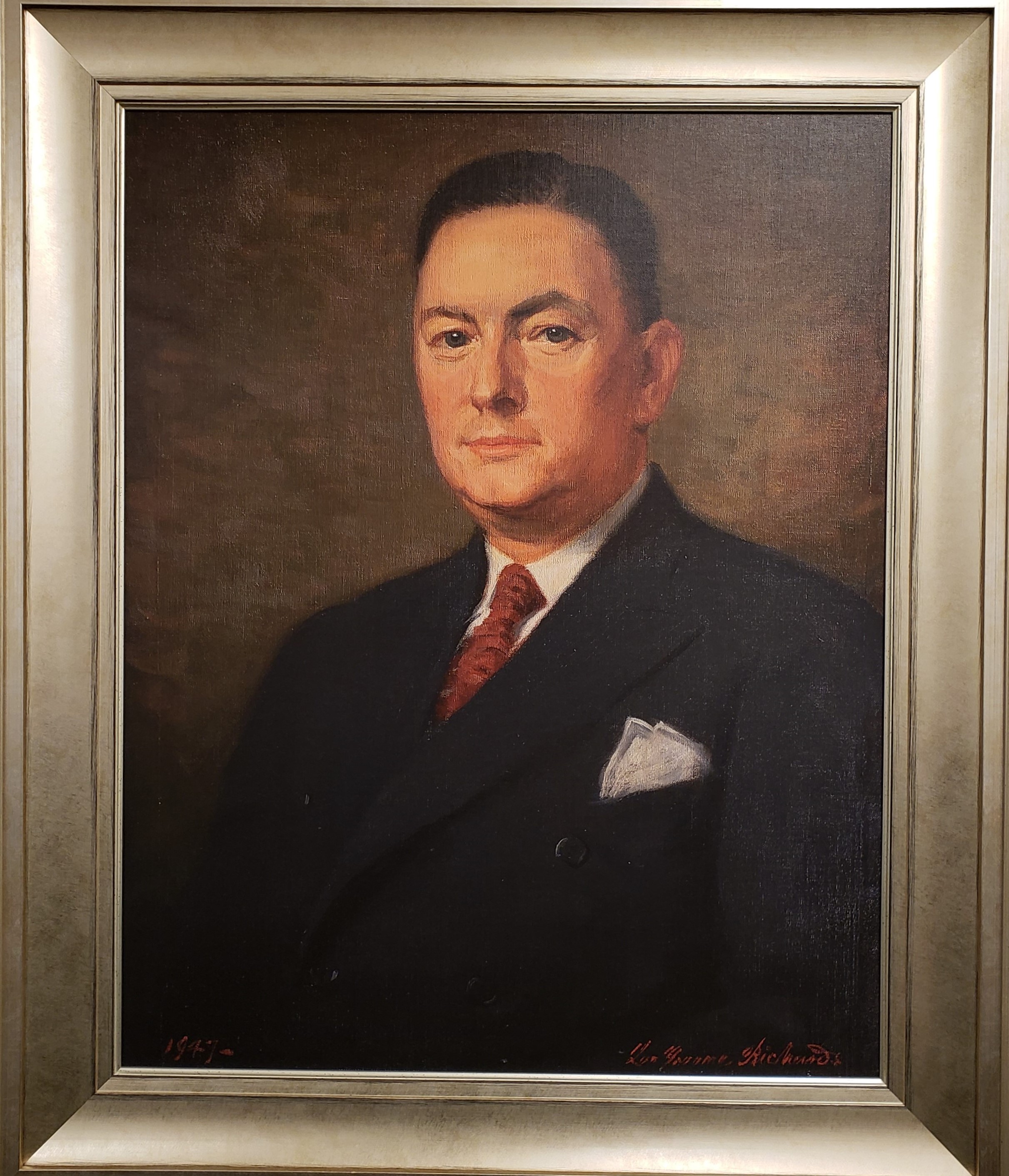
A copy of this portrait by LeGrand Richards hangs in our office
After the October 1953 General Conference, Elder Cowley’s associates noticed a change in his demeanor. He became quieter and more melancholy, sometimes indicating that his time in mortality was coming to a close. He even described how he intended to die. Not wanting to feel tired when he reached the other side of the veil, he planned to awaken at 5:00 a.m. after a good night’s sleep, just as he did every morning, and then quietly slip away.
In December 1953, Elder Cowley traveled to Los Angeles with other general authorities of the Church to participate in laying the cornerstone of the new temple there. After the ceremonies were finished on 12 December, he got a good night’s rest, woke up the next morning at 5:00 a.m. as he always did, took a big, deep breath, and then quit breathing, having suffered another heart attack. He was 56 years old.
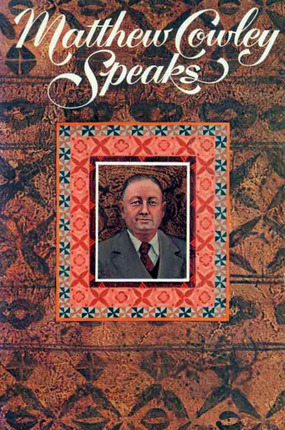
The book is still in print
Because Matthew had left only $400 in all of his financial accounts, arrangements were made with Deseret Book Company to publish a collection of his writings and sermons, with the royalties going to Elva Cowley. Although the publisher agreed to pay her double the normal rate—allowing her to live comfortably until her death in 1987— Deseret Book broke even on the deal because Matthew Cowley Speaks became the largest-selling book of its kind in the company’s history, a testament to how beloved Elder Cowley had become to people all over the world.

Glen L. Rudd
Elder Glen L. Rudd, who served as a missionary under President Cowley and probably spent more time working directly with him than anyone else, said of him: “He was a very uncomplicated man. Some who couldn’t understand his simplicity became confused about what he did and found it difficult to understand him. I had the opportunity of being his close associate for fifteen years. After he died, some people asked me about him. One man said, ‘I just can’t understand how Brother Cowley did all the things he did.’ The real answer is that Brother Cowley went directly to the Lord, told the Lord what he wanted, and received the answer. There wasn’t anything hard about that; Brother Cowley just did it.”*
Elder Rudd, who later became a General Authority Seventy of the Church, added: “Of all the men I have ever known, I have never known one with more faith.”*
While almost every missionary we have read about or met since our call to New Zealand has had nothing but great things to say about their own mission presidents and the wonderful people they worked with here, no single person has had the impact on or was loved as much by all the people of Pacific as Matthew Cowley. How fitting, then, that the Pacific Church History Centre here in Hamilton bears his name.
*Sources for the quotations and much of the information in this post:
Matthew Cowley, “Miracles.” Video of speech given at a devotional at Brigham Young University, Provo, Utah, February 1953. Transcription of audio clip by Nancy Harward.
Glen L. Rudd, Life of Matthew Cowley. Excerpts from two talks given in Rexburg, Idaho, and Logan, Utah, 1993-95. Privately printed, no date.
Glen L. Rudd, Tender Moments, quoted by Dennis B. Horne in “Truth Will Prevail: Elder Matthew Cowley as a Special Witness of Jesus,” 9 May 2017 (http://www.truthwillprevail.xyz/2017/05/elder-matthew-cowley-as-special-witness.html)
Thanks for your posts! My husband, Leroy Transfield, who sculpted the portrait bust of Matthew Cowley for the Centre is also a grand nephew of Ria (Leah) Moheko Wineera, mother of Junior, the young boy blessed by Elder Cowley.
A belated thanks for sharing this history that added much more than I had read about Matthew Cowley.
It has been many years since Aunt Jewell’s passing, yet because our families visited with each other so frequently, I have been able to keep many cherished memories of her, in particular her humor and her laugh.
P.S. Jewell Cowley Sheffield’s name is spelled JeweLL… two Ls. This is something that consistently bugs her family (like when I get called Kristine haha)! Love hearing about your experiences.
Thanks for the correction! We’ll see what we can do about fixing it elsewhere.
Thanks for this wonderful post and tribute, Nancy! You hit all the highlights to be sure.
Give Michael credit for doing most of the research for this post.